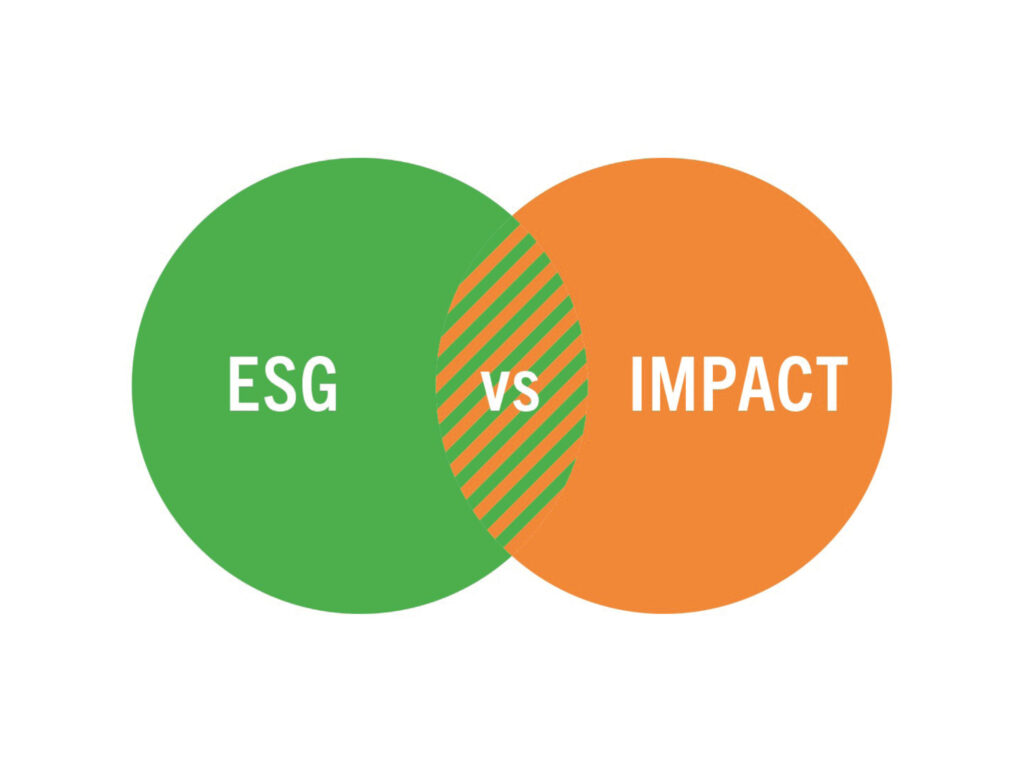
ESG and impact investing are popular terms in investment ethics. Both combine financial decisions with values, but they are different. Environmental, social, and governance (ESG) is a framework for evaluating the behavior of companies in these three categories. ESG criteria help investors analyze investments and discover risks and opportunities that go beyond financial analysis. Impact investing, however, does not only seek financial returns but also social or environmental benefits. The goals are more focused and targeted. Both investment styles are growing rapidly but serve different sustainable financial goals.
The Goal of ESG Investing
ESG investing focuses on how companies deal with environmental, social, and governance issues in order to analyze risks and make informed investment decisions. ESG investors may avoid companies with poor labor practices, high carbon emissions, or poor corporate governance. Large institutional investors and asset managers use ESG investing to integrate sustainability into their decisions. The goal of ESG investing is to avoid companies that pose long-term risks or are not aligned with investors’ values, rather than changing them. ESG investing, therefore, helps to discover companies that can thrive in a changing world and make portfolios ethical.
The Mission of Impact Investing
Impact investing focuses on results rather than methods. Impact investors look for companies and projects that are socially and environmentally responsible. This can include investments in sustainable energy companies, affordable housing projects, or social enterprises that provide education and healthcare to disadvantaged groups. Impact investing aims to create measurable positive change. Impact investors cite real-world changes that their investments have brought about. These investors value both financial gain and practical actions. This approach is driven by mission, purpose, and profit.
Key Differences in Approach and Strategy
Although ESG investing and impact investing may seem similar, their goals and implementation methods differ. ESG investing generally involves risk management and a values orientation. It helps investors avoid bad companies and choose ethical ones. However, ESG investing does not guarantee that a company will help the world. Companies can score high on ESG criteria by preventing harm rather than creating benefits. Impact investing, on the other hand, focuses on doing good. It is proactive, not reactive. Impact investors focus on social and environmental solutions, making it a more practical and targeted approach.
Evaluating the Success of ESG and Impact Investing
A key difference between ESG and impact investing is the criteria used to measure success. Most ESG investors evaluate companies on both financial performance and ESG compliance. They use ESG ratings and reports to assess how well organizations perform in different categories. These rankings emphasize risk management and responsible business conduct. Impact investors, on the other hand, use financial and performance indicators. They want to demonstrate that their investments are profitable. Think of creating jobs, reducing carbon emissions, or the number of children in education. Impact investors use specific frameworks to measure impact.
Different investors prefer each approach.
ESG and impact investing attract different investors. Regular investors want to achieve sustainability without sacrificing performance, as with ESG investing. Large pension funds, mutual funds, and asset managers are increasingly investing based on ESG criteria. Impact investing, however, attracts mission-driven individuals, foundations, and organizations focused on societal transformation. These investors are often willing to accept lower returns or higher risks for the opportunity for change. Some impact investments have already delivered strong returns, challenging the assumption that purpose and profit are always in conflict.
